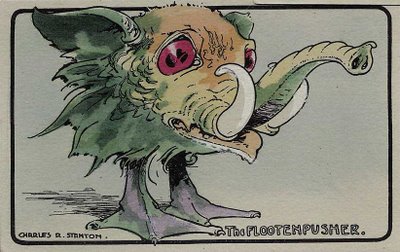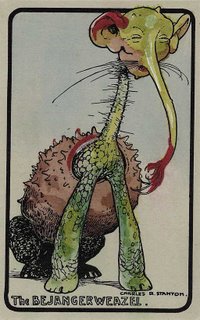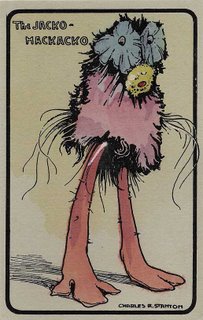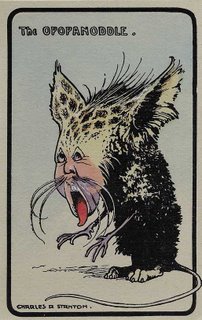The identification of a postcard's time of production can be a difficult task, due to the fact that postcards, unlike stamps, were produced in a decentralized, unregulated manner. That being said, there are some general rules to dating when a postcard was printed.

Postcards are generally sent within a few years of their printing so the postmark helps date a postcard. If the card is original and not a reprint, a postcard's original printing date can be deduced from such things as the fashions worn by people in the card, the era in which the cars on the street were made, and other time sensitive clues.
Another way to get a rough estimate of the year a postcard was printed is to determine the postcard era in which it was printed. The following list should help you get started dating your postcards.
 1893-1898 Pioneer (P)
1893-1898 Pioneer (P)During this time only the government was allowed to use the word "Postcard" on the back of the postcard. Privately published postcards in this era will have the titles "Souvenir Card", "Correspondence Card", or "Mail Card" on the back.
 1898-1901 Private Mailing Card (PMC)
1898-1901 Private Mailing Card (PMC)In 1898, by an act of Congress, private printers were granted permission to print and sell cards that bore the inscription "Private Mailing Card". Postcards of this era have undivided backs. During this period around 1900, Real Photo postcards (postcards on film stock) began to filter into use.
 1901-1907 The Undivided Back (UB)
1901-1907 The Undivided Back (UB)Cards from this era have the word "Post Card" printed on the reverse. Written messages were still restricted to the front side, with the entire back dedicated to the address. This "undivided back" is what gives this postcard era its name.
"At the end of this period in time, the picture postcard hobby became the greatest collectible hobby that the World has ever known. The official figures from the U.S. Post Office for the fiscal year ending June 30, 1908, cite 677,777,798 postcard mailed. That was at a time when the total population of the U.S. was 88,700,000."
 1907-1915 The Divided Back (DB)
1907-1915 The Divided Back (DB)The divided back card, with space for a message on the address side, began the Golden Age of American postcards, which lasted until about 1915, when World War I blocked the import of the fine German-printed cards.
 1915-1930 The White Border (WB)
1915-1930 The White Border (WB) After WWI, the German publishing industry was never rebuilt. Most locally available postcards were printed by U.S. publishers during this period. On view postcards, to save ink, a white border was left around the view, thus we call them "White Border" postcards.
 1930-1945 The Linen (L)
1930-1945 The Linen (L)New American printing processes allowed printing on postcards with a high rag content. The rag content gave these postcards a textured feel. They were also cheaper to produce and allowed the use of bright dyes for image coloring. They proved to be extremely popular with roadside establishments seeking cheap advertising.
 1945-1970 The Chrome
1945-1970 The ChromeA new type of postcard, the color Photochrome (called Chrome) appeared around 1939. These "Chrome" postcards started to dominate the scene soon after they were launched by the Union Oil Company in their western service stations in 1939. They were easily produced, of high photo quality and most importantly, they were in color.
Image Source

 Cherryland Postcard Auctions
Cherryland Postcard Auctions













